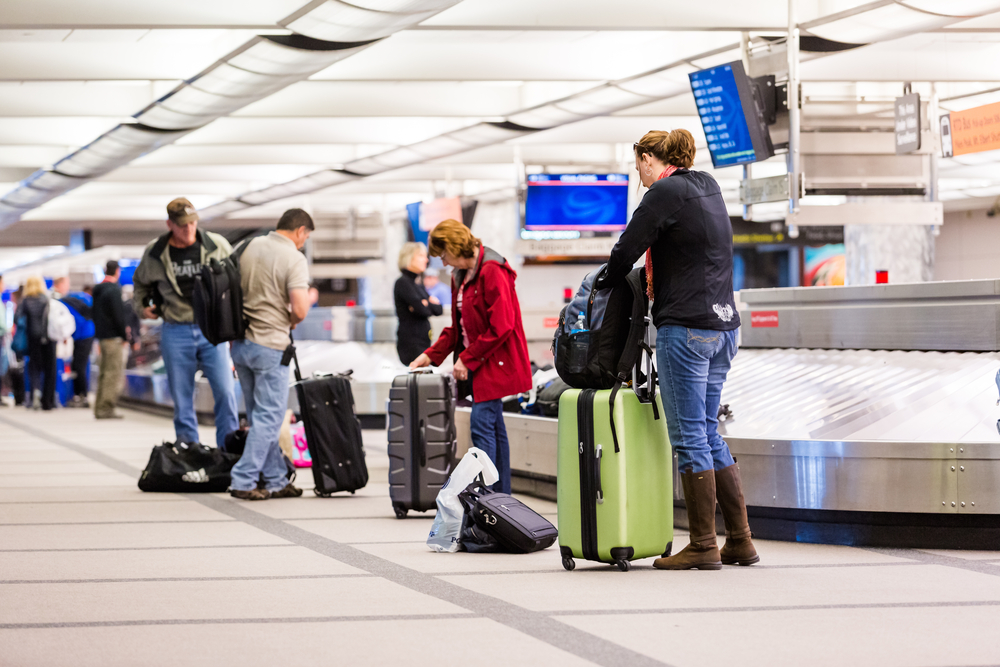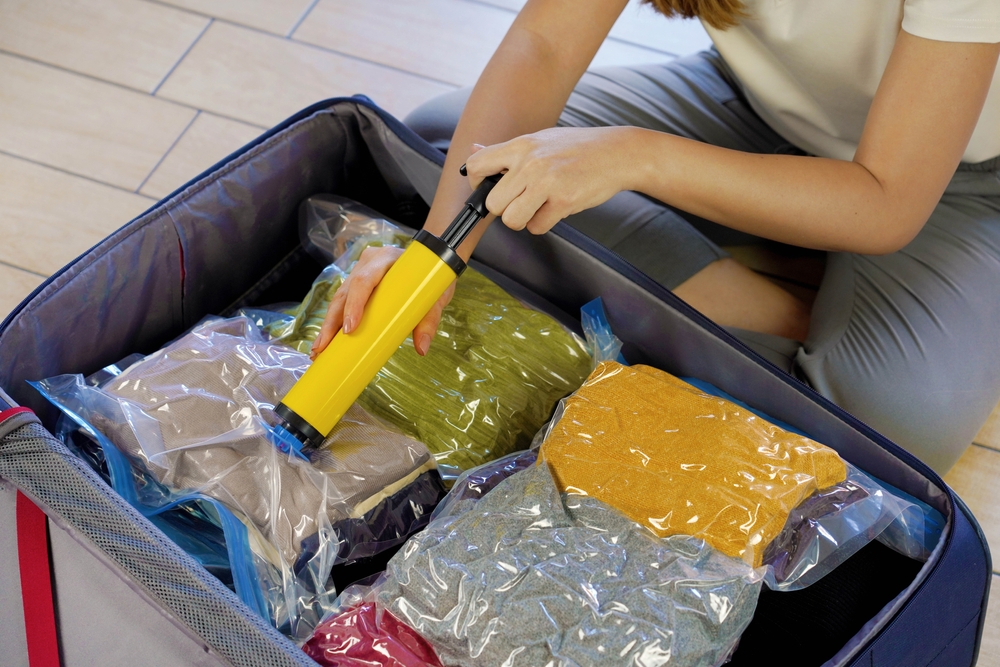Suitcases: polymers are making a big splash
It’s easy to forget that luggage has been evolving for almost 70 years. Up until the 1950s, suitcases were made of leather or boiled cardboard for those on a budget. Bulky, heavy and unwieldy, their only quality was their functionality. This was not so bad because travellers were few and far between and the elite concerned were not yet adventurous. It was after the last world war that we saw the beginnings of mass tourism. At least in the most developed countries....
Taking advantage of the boom in plastics, then a very fashionable and modern material, manufacturers began to develop the first plastic suitcases.
Who invented them? It's hard to say, as the big names in the industry claim that they were the original inventor, not without a certain amount of pride... In any case, in 1956 Samsonite launched a suitcase made of an injected polypropylene (PP) frame covered with a vinyl canvas. Flexible and rigid, this suitcase was to be a hit from the moment it was launched. At the same time, Delsey, its direct competitor (which it remains to this day, since the American company is the world leader, closely followed by the French company), preferred to market a suitcase made entirely of moulded PP, which was to become the world’s first rigid plastic suitcase. It was also an immediate success! More surprisingly, it was businessmen who particularly popularised this suitcase, which was already available in various sizes and could be fitted into the luggage compartments of aircraft cabins. Lightweight, compact, easy to handle, indestructible... the advantages of this new generation of suitcases were obvious.

Almost all suitcases today are created from the very large family of polymers, which are strong, lightweight materials that can take on any shape or colour. |
Plastics are on a roll!
Not surprisingly, such a craze did not leave the competition unmoved. Today, while some luxury trunk makers continue to use leather for the shells (although the interior linings are made of PVC or polyester), the vast majority of cases are made of polymers. Made of polycarbonate or polypropylene, they are resistant to shocks and scratches, to deformation, to bad weather and temperature variations. Although quite expensive, these polymers guarantee an almost unlimited life span. For occasional travellers, there are suitcases made of ABS, a polymer that may be less resistant over time but is much more affordable...

Surprising as it may seem, the first suitcases with wheels only appeared in the early 1970s. |
Always a forerunner, Delsey had the ingenious (even obvious) idea in 1972 of fitting its suitcases with wheels to make them even more manageable. The wheels are made of polymers for lightness and rubber for comfort and noise reduction. The manufacturer has even recently redesigned the zipper system, making it almost impossible to force open. |
The material used is a closely-guarded secret. All we know is that it is a polymer and that the fastening system is totally innovative. A good ten years ago, it was Samsonite's turn to strike a blow by launching the Curv, a suitcase made of a polypropylene fibre that was woven before being thermoformed. This material is five times lighter than traditional moulded or injected polypropylene and is just as strong, while being more supple, which is very practical for closing a full suitcase... Its only drawback is its high price, which has not prevented it from being a success even today! Finally, the brand has not forgotten children and has designed a polypropylene suitcase for them. It looks a bit like a rocking horse mounted on four wheels on which children can ride and move around using their feet.
Colourful polymers go green
The market leaders are keen to keep their lead in order to keep the competition at bay. Three years ago, Samsonite launched the first rigid suitcase made of recycled polypropylene, which is made from household plastic waste such as food trays or trays of strawberries and raspberries. The interior lining is made from recycled PET. Delsey, for its part, has taken an interest in soft luggage and now offers a complete collection (wheeled suitcases, travel bags, backpacks, etc.) made from recycled PET and polyester.
|
These materials do not prevent the luggage from displaying shimmering colours or even material effects that only polymers allow, just like those made from virgin resins. The sad black suitcases have been out of fashion for a long time and consumers are increasingly looking for ways to differentiate themselves. If only to make it easier to find their luggage when they have to pick it up from airport conveyors. |

Recycled plastics are hot! Even high-end luggage manufacturers are now offering luxury models made from recycled polymers. |
Plastics and a vacuum
Lightweight, easy to handle... today's suitcases have all the qualities required for unrestricted travel. Well, almost, because if there is one thing that has changed very little, it is their volume, for obvious reasons. Larger luggage would already be difficult to transport and impossible to fit in the boot of a car or even in the hold of a plane. Some travellers have found the trick! They pack their clothes in completely airtight polymer bags beforehand and then suck out the air with a small vacuum pump that looks like a bicycle pump. These bags are very cheap and are usually made of polyethylene and the valve systems are made of polyamide, both of which are suitable for inflating. By sucking out the air from the bags, the clothes are compressed and their volume is divided by three! A clear space saving. The only drawback is that we are talking about volume and not mass. Beware of surcharges...

A small vacuum pump and that's it. These waterproof plastic bags are very practical for compressing clothes and thus saving space in your luggage. |
Plastics pack their bags
Suitcases are obviously not an option for hikers and backpackers. Logically, they will want to transport their belongings in a backpack. The backpack is not a new invention, as depictions of the concept can be found on engravings from the 10th century! At the time, it was a simple wicker basket with rope or leather straps designed to enable farmers to carry their harvest.
As with suitcases, it was not until the 20th century that it began to evolve. The first modern models appeared at the turn of the last century, a period that saw to the beginning of the Scout Movement and the first attempts at hiking. These bags consisted of a metal frame (initially made of iron and later of lighter aluminium) and a cotton canvas bag, often oiled to offer a semblance of waterproofing. Unlike suitcases, which made their revolution in the 1950s, backpacks arrived a good decade later. For the record, it would go much farther.
Today, there are connected backpacks equipped with solar panels (made of flexible polymers) designed to power a GPS, a telephone or a speaker. Some are also equipped with an integrated water bottle made of PEVA, a polymer suitable for contact with food. Today's hiking bags are lightweight and robust, and are truly technical objects made from various polymers. The shell and lining are usually made of polyester fibres, which are virtually tear-proof and waterproof. The areas that come into contact with the ground when the bag is set down on the ground are made of polyamide, a fibre that is highly resistant to abrasion. The straps are made of polypropylene, a strong fabric with very little elasticity to ensure that the bag stays in place once on the shoulders. The top-of-the-range bag manufacturers add a moulded polyurethane foam pad to the back of their products, which moulds perfectly to the shape of the body for greater comfort. And to top it all off, today's bags are no longer unisex.
There are models for men and women. The main difference is that the foam padding is adapted to the female or male body shape and the straps are positioned differently, for the same reason.

Backpacks are truly technical objects. Thanks to the properties of the polymers used, the bags are now adapted to every body type. |
Recycling: tightly-sealed bags
Twenty years ago, travel bags were considered impractical and were somewhat superseded by backpacks and wheeled suitcases. Today, they are a popular item once again. One could even say that they have experienced a resurrection owing to a few brands that have succeeded in making them very trendy objects. Today, they are a popular item once again. One could even say that they have experienced a resurrection owing to a few brands that have succeeded in making them very trendy objects. These include the American company North Face and its "duffel bag" in flashy PVC colours, or the Swiss company Freitag which recovers used PVC truck tarpaulins to make bags.

With companies like La Virgule, upcycling is making its mark. All their bags are made from PVC or polyurethane fabrics recovered from end-of-life inflatable boats. |
La Virgule, a young French company, entered this market two years ago with a rather innovative bag. Like Freitag, these young designers have a singular philosophy, upcycling, based on which they design their different bag models. The French start-up's bags are made exclusively from end-of-life objects such as polyester camping tents, PVC boats and kayaks, and polyurethane or PVC lifeboats. |
Manufactured in Europe, their products were an immediate success and the collections continue to grow. La Virgule now offers bags, bicycle bags and computer cases... Fully convinced that upcycling has a bright future, they are now looking to do away with traditional seams and offer heat-welded models which are perfectly waterproof, as allowed by PVC and polyurethane, both of which are polymers suitable for sealing.
See our previous articles on La-virgule-upcycled-and-responsible-bags
Polymers take it to the roof
The bags are packed! All that remains is to get them to your holiday destination. Those who choose to travel by car will sometimes opt for roof boxes which are very practical and can be attached to a simple roof rack, allowing you to carry a considerable amount of extra luggage. There are two types: the first are flexible and most often made of PVC, a material that is ideal for ensuring a good seal and is also used for shower curtains... These flexible models do not take up any space once they are put away as they can be folded.
|
The other type, which is the most common, are rigid. They usually consist of a bottom and a lid made of ABS, a material whose resistance is well proven as it is used to build many motorbike helmets. Some manufacturers choose to add PMMA to their lid, a polymer that is particularly resistant to ultraviolet light. While other manufacturers prefer a composite material such as fibreglass and epoxy resin (this is the composite mostly used in the hulls of pleasure boats). |

Plastic roof boxes are now a must-have for transporting a few extra pieces of luggage while protecting them from theft and the weather. |
It is strong, resistant to almost everything, and its only drawback is that it is a little heavier. For the rest, the price difference between the many existing models is explained by the accessories offered: quality of the hinges, integrated LED lighting, tamper-proof locks, height adjustment mechanism, etc.
See interview with Thule



